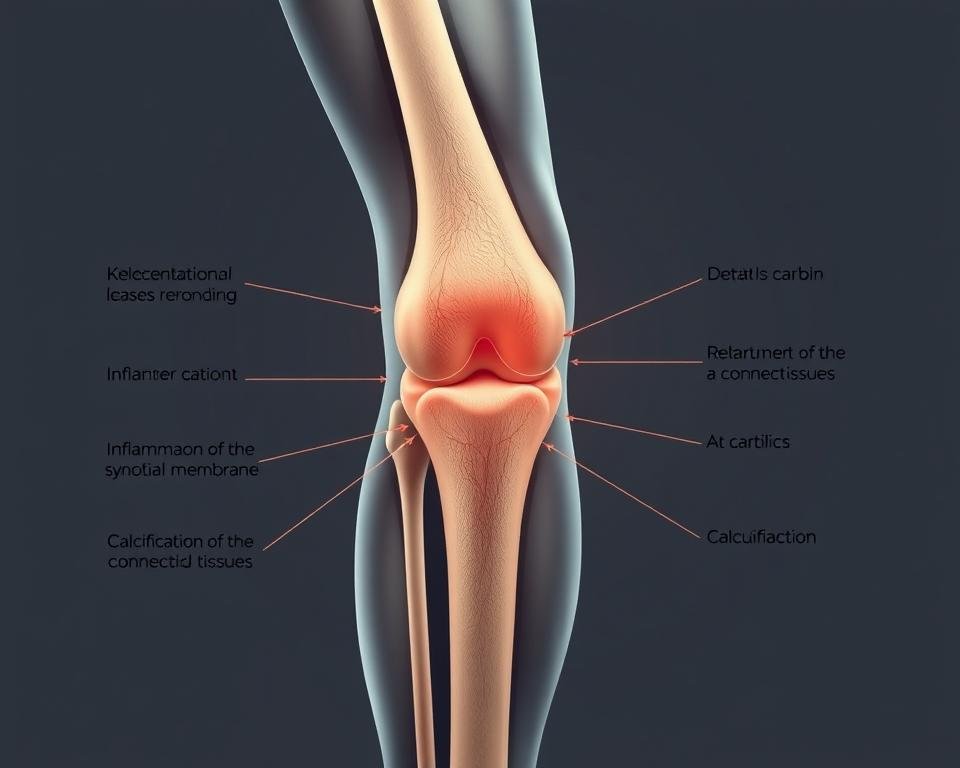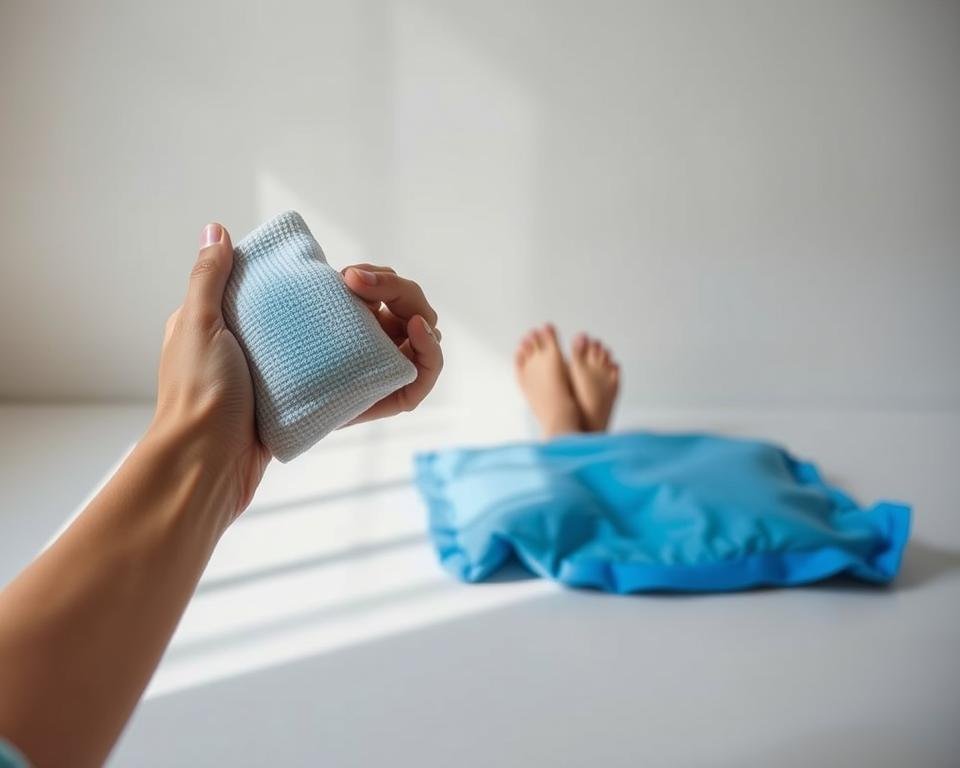“Nature itself is the best physician,” Hippocrates once observed. For those navigating the challenges of stiff or achy joints, this wisdom feels especially relevant. As bodies age, everyday movements can become battlegrounds—but relief doesn’t always require a prescription bottle.
Discomfort in your knees, hips, or hands might feel dull one day and sharp the next. Arthritis and osteoarthritis often reshape how people approach simple tasks. That’s why understanding your body’s signals matters. What works for a throbbing shoulder might not soothe creaky fingers.
Natural approaches offer flexibility. They let you experiment with strategies that fit your lifestyle, whether through gentle movement, dietary tweaks, or mindfulness practices. Mary Anne Dunkin, a trusted health writer, emphasizes that combining methods often yields the best results. There’s no universal fix—just personalized paths to feeling better.
This guide explores solutions grounded in both science and real-world experience. You’ll discover how small changes can add up to meaningful improvements. Let’s focus on what you can control—starting today.
Key Takeaways
- Joint discomfort varies (dull, sharp, or throbbing) and requires tailored strategies.
- Natural remedies provide alternatives to traditional medications with fewer side effects.
- Aging bodies often respond best to holistic, trial-and-error approaches.
- Expert-backed insights ensure practical, realistic solutions for daily life.
- Empowerment comes from understanding and managing your unique needs.
Understanding Joint Pain and Its Impact
Ever felt like your body’s hinges need oiling after sitting too long? That creaky sensation often starts with inflammation or wear-and-tear. Over time, daily movements—like climbing stairs or typing—can strain your muscles and tissues, leading to stiffness or swelling. Recognizing these signals early helps prevent bigger issues down the road.

Common Causes and Symptoms
Your knees might protest bending, or your hands ache after gardening. These struggles often trace back to conditions like arthritis, where inflammation wears down cartilage. Even minor muscle tension around joints can reduce flexibility. Feet may feel tender in the morning, while shoulders might lock up after repetitive motions.
How It Affects Mobility and Daily Life
Imagine struggling to open jars because your fingers won’t cooperate. Stiffness in one area—like the knee—can force you to compensate, straining other muscles. Simple tasks like walking or cooking become exhausting. Over time, limited motion may shrink your activity levels, impacting overall health.
Doctors often emphasize tracking patterns: Does heat ease your discomfort? Does rest help? Answers guide personalized solutions. Listen closely—your body’s whispers today could prevent shouts tomorrow.
Natural Joint Pain Relief Techniques
What if your kitchen held secrets to easing those stubborn aches? Simple tools already in your home can become powerful allies. Many find that combining warmth, cold, and mindful routines creates noticeable improvements without harsh side effects.

Everyday Solutions You Can Trust
A warm towel wrapped around stiff fingers or a bag of frozen peas placed on a tender knee often work wonders. Heat relaxes tense muscles, while cold reduces swelling. Rotate between them—15 minutes per method—to relieve pain effectively.
Try adding Epsom salts to a bath. The magnesium helps ease muscle tension linked to arthritis. For quick relief, massage olive oil mixed with ginger into sore areas. These approaches fit seamlessly into daily life.
Timing Matters With Temperature
Use heat when stiffness lingers, like morning soreness. A heating pad on low settings does the trick. Cold works best after activity that causes pain, like gardening. Always wrap ice packs in cloth to protect your skin.
If arthritis flares up, alternate therapies may need adjustments. Listen to your body—what eases discomfort today might differ tomorrow. Consistency is key, but flexibility ensures these methods remain helpful over time.
Lifestyle and Diet Adjustments to Ease Joint Pain
Your plate could be your first line of defense against stiffness. What you eat directly impacts inflammation levels—and how your body handles daily movement. Simple swaps in your kitchen might help you move more freely tomorrow.
Embracing a Joint-Friendly Diet
Colorful fruits and leafy greens pack antioxidants that fight inflammation. Fatty fish like salmon deliver omega-3s to ease pain linked to arthritis. Swap processed snacks for walnuts or chia seeds—their healthy fats support tissue health.
Carrying extra weight? Every pound lost takes four pounds of pressure off your knees. Focus on lean proteins and fiber-rich veggies to feel full longer. Smaller portions mean less strain on your back and hips during routine activities.
Try these meal-planning tips:
- Roast turmeric-spiced veggies twice weekly
- Choose olive oil over butter for cooking
- Drink herbal tea instead of sugary sodas
Remember—you may need 6-8 weeks to notice changes. Stay consistent. Your future self will thank you when bending or climbing stairs causes pain less often.
Top Nutritional Supplements and Natural Remedies
What if your medicine cabinet could become a toolkit for smoother movement? Science-backed supplements now offer targeted support for aging bodies. These options work alongside—not against—your daily habits to address stiffness at its source.

Fish Oil, Curcumin & SAM-e: Your Trio for Comfort
Fish oil’s omega-3 fatty acids tackle inflammation like a fire extinguisher. Studies show taking 1,000 mg daily may help reduce morning stiffness. Curcumin, turmeric’s golden compound, rivals some medications in easing discomfort. A 2021 review found it lowers swelling markers by 25% in many users.
SAM-e plays double duty: it supports cartilage repair and mood balance. While pricier, research suggests 400 mg doses protect tissue from damage over time. Always pair these with meals to boost absorption.
CBD and Emerging Alternatives
Hemp-derived CBD has surged in popularity, with many reporting better sleep and flexibility. Start with 10-20 mg oils and track changes weekly. Some combine it with ginger or boswellia for enhanced relief.
Remember—supplements carry risk if mixed with prescriptions. Chat with your therapist before adding new items. They’ll check interactions and suggest ideal levels based on your health history. Small tweaks today can lead to big strides tomorrow.
Effective Exercise and Physical Therapy Solutions
Movement might feel like the last thing you want to do when stiffness strikes—but strategic activity often unlocks surprising relief. Gentle workouts and expert guidance can rebuild strength without straining sensitive areas. Think of it as retraining your body to move smarter, not harder.
Low-Impact Exercises to Strengthen Joints
Walking in a pool or practicing tai chi offers resistance without pounding your knees. These activities improve flexibility while protecting cartilage—a key component for long-term comfort. Studies show water aerobics reduces pain stiffness in 68% of rheumatoid arthritis cases within 8 weeks.
Posture, Rest, and Assistive Devices for Daily Relief
Slouching strains muscles around your hips and spine. Use ergonomic chairs or wrist splints during repetitive tasks. “Proper alignment distributes pressure evenly,” explains physical therapist Laura Simmons. Pair posture checks with scheduled rest breaks to prevent flare-ups.
How a Physical or Occupational Therapist Can Help
A physical therapist tailors exercises to your unique needs—like rebuilding grip strength or easing shoulder tension. They might suggest heat therapy before workouts or custom braces for unstable joints. Many patients report 40% less discomfort after six sessions.
Try these steps today:
- Swap high-impact runs for cycling or yoga
- Set phone reminders to adjust your sitting position
- Ask a therapist about resistance bands for home use
Consistency turns small efforts into lasting results. Your body adapts—one mindful movement at a time.
Alternative and Mind-Body Approaches
What if ancient practices could team up with modern science to calm your body’s protests? Centuries-old techniques now partner with clinical research to offer fresh pathways for managing stiffness. These methods focus on your body’s innate ability to heal—no prescriptions required.
Acupuncture, Hypnosis, and Relaxation Techniques
Fine needles might sound intimidating, but acupuncture sessions often leave patients surprised. This practice triggers natural endorphins that help relieve discomfort by targeting specific energy pathways. Similarly, hypnosis guides your mind to reinterpret signals from stiff areas, potentially reducing pain intensity.
Daily relaxation rituals matter too. Deep breathing exercises lower stress hormones linked to swelling, while guided imagery distracts your brain from focusing on sore spots. One study found that 10 minutes of progressive muscle relaxation daily cut stiffness reports by 34% in eight weeks.
“Mind-body approaches let you reclaim control,” notes Dr. Ellen Park, a rehabilitation specialist. She recommends starting with simple steps:
- Practice box breathing (inhale 4 counts, hold 4 counts) before bed
- Try audio-guided hypnosis sessions during afternoon slumps
- Schedule acupuncture every 2-3 weeks initially
These treatments work best alongside conventional care. The National Center for Complementary Health reports that 42% of chronic discomfort patients benefit from combining methods. While not a cure-all, these strategies may also improve sleep and mood—bonuses worth exploring.
Conclusion
Your journey to comfort isn’t a single path—it’s a mosaic of smart choices. Combining anti-inflammatory foods with mindful movement creates ripple effects. Warmth therapy after morning stiffness, omega-3 rich meals, and afternoon stretches all play their part.
Consistency matters more than perfection. Track what eases your daily activity—whether swimming laps or sipping turmeric tea. Some find acupuncture sessions boost flexibility, while others thrive with ergonomic adjustments at their desk.
When progress stalls, reach out. A physical therapist can spot hidden tension patterns or suggest new activity modifications. Research shows those who blend professional guidance with home strategies report better long-term results.
Stay curious. Rotate between approaches as seasons change or your needs evolve. Empowerment grows when you understand your body’s unique language. Small, steady steps today build toward freer movement tomorrow—because life shouldn’t feel like an uphill climb.
